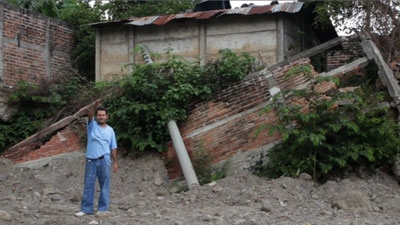WASHINGTON DC, October 9, 2012 – As the Sendai dialogues get into full swing, Latin America and the Caribbean, and the world for that matter, is slowly realizing that the “best” natural disaster is the one that doesn't happen.
In a cruel twist, natural disasters could do to Latin America what the global crisis couldn't: drag down development and threaten many of the region’s social and economic gains.
With an expected price tag of over US$2 billion annually –equivalent to one third of Nicaragua’s GDP- natural disasters are becoming costly propositions for a region that has, so far, boasted the world’s fastest growth in jobs and economic opportunities.
Partly because Latin America naturally sits on a territory prone to hazards, but also because, as yet, not enough preventative measures have been embraced, nine of the world’s top 20 countries most exposed to disaster-led economic impacts are in the region. At the same time, the region’s decision makers are increasingly trying to nip disasters in the bud, with many Latin American countries have placing hazard mitigation and prevention high on their agendas, according to experts.
Five countries --Ecuador, Brazil, Costa Rica, Cuba, Mexico- have made the most progress in risk reduction over the past six years according to the 2005 Hyogo Framework national progress reports.
“We have seen an important shift from emergency response to prevention,” said Anna Wellenstein, Sector manager for the World Bank Latin America Disaster Prevention Unit.
Reducing vulnerability is central to these efforts in a region which has seen its share of disasters increase over the years, partly as a result of changes in weather patterns. Exposure to cyclones and earthquakes will double for Latin American populations, from 680 million people this year to 1.5 billion people by 2050, according to according to the Natural Hazards, Unnatural Disasters report.

